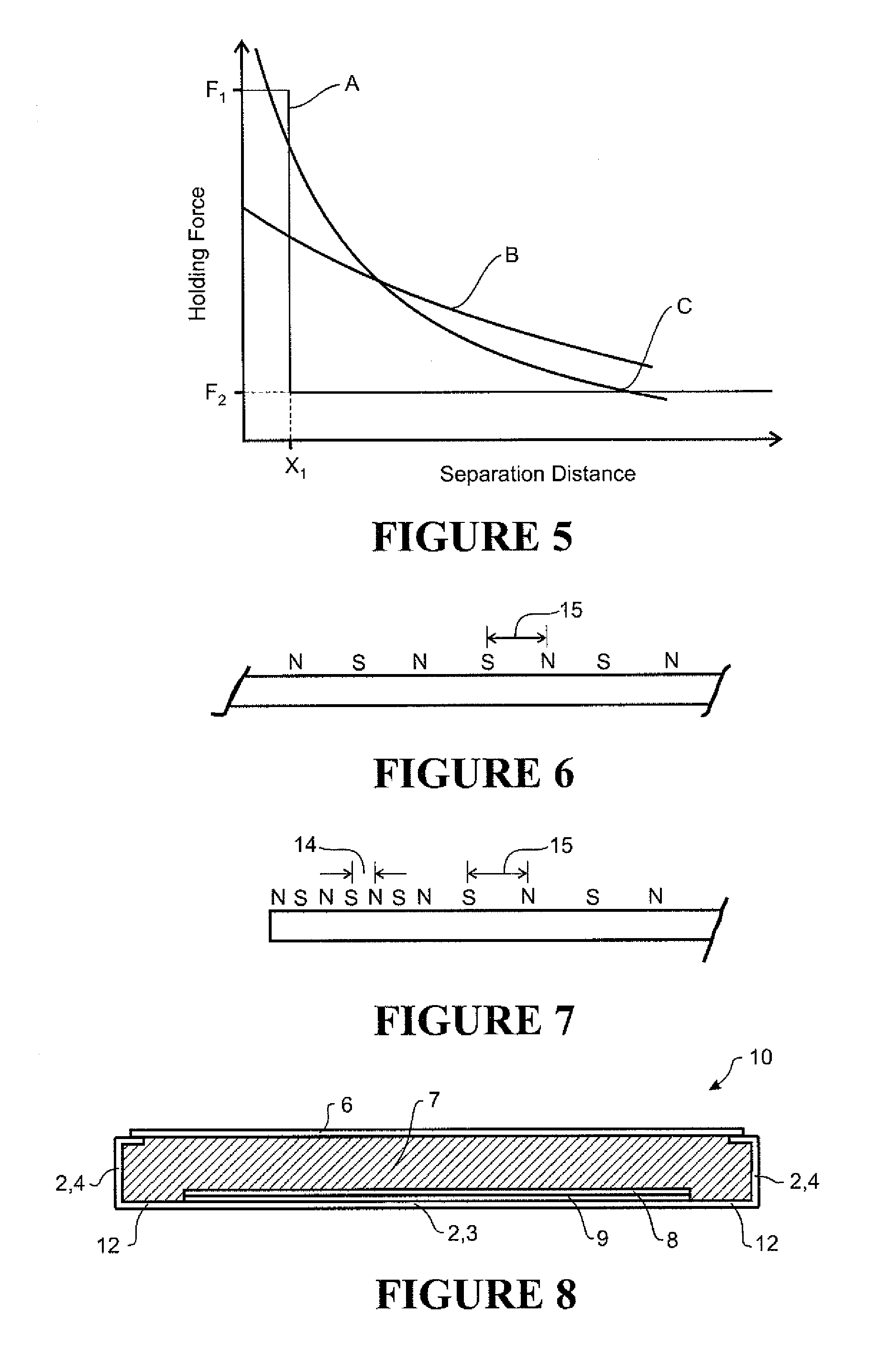Appliance door
- Summary
- Abstract
- Description
- Claims
- Application Information
AI Technical Summary
Benefits of technology
Problems solved by technology
Method used
Image
Examples
Embodiment Construction
[0076]FIG. 1 is a cross section through a prior art refrigerator door. The door may be mounted to the appliance cabinet via a hinge or hinges to pivot about a hinge axis between an open and a closed position. Alternatively the door may form the front of a drawer, in a closed position the front of the drawer closing the appliance cabinet. The door 1 comprises an outer door skin 2. Outer door skin 2 may be made from a flat sheet of material. The edge regions of a blank of sheet material such as a sheet of stainless steel are folded at a right angle to the plane of the front panel 3 of the door to create edges 4 of the door. All four edge regions of the blank may be folded to create four edges extending the full perimeter of the door. Corner locations between two adjacent edges may be welded. Alternatively, a separate part such as a plastic moulding may be attached at the corner of a door between two adjacent edges 4 of the door. Alternatively, vertical edges of the door 4 may be folde...
PUM
 Login to View More
Login to View More Abstract
Description
Claims
Application Information
 Login to View More
Login to View More - R&D
- Intellectual Property
- Life Sciences
- Materials
- Tech Scout
- Unparalleled Data Quality
- Higher Quality Content
- 60% Fewer Hallucinations
Browse by: Latest US Patents, China's latest patents, Technical Efficacy Thesaurus, Application Domain, Technology Topic, Popular Technical Reports.
© 2025 PatSnap. All rights reserved.Legal|Privacy policy|Modern Slavery Act Transparency Statement|Sitemap|About US| Contact US: help@patsnap.com



